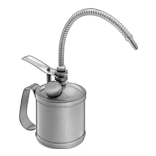Filter by
Stroke Length
Bore Size
Thread Size
Linear Air Cylinder Type
Extended Length
Component
Rod Diameter
Force @ 100 psi
Actuation Type
Length
Retracted Length
Thread Direction
Rod End Type
Thread Type
Sensor Ready
Rod Thread Size
Actuation Mechanism
DFARS Specialty Metals
Export Control Classification Number (ECCN)
Power Transmission
Material Handling
Fluid Handling















































